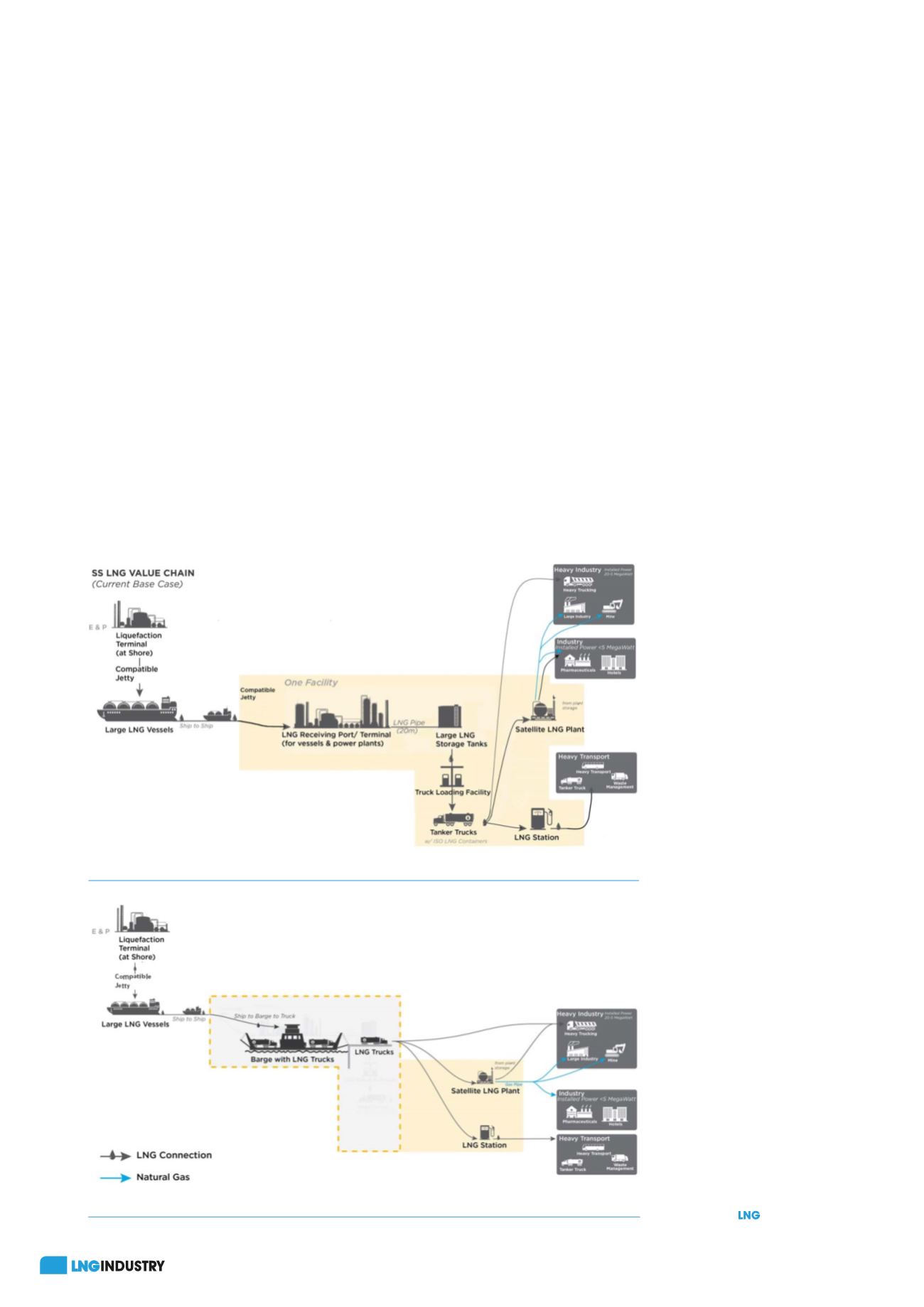
36
January 2020
of the study is twofold: define a suitable mooring configuration
for the ships during STS transfer operations, and establish the
operational and survival limits (considering LNG transfer and a
safe stay in the anchoring area).
The limits are described as directional combinations of wind
speed, wave characteristics (wave height and peak period) and
current speed. This systematic study will allow for the evaluation
of almost any semi-sheltered area in the world for a preliminary
feasibility assessment.
Advanced simulation tools are applied to describe the
dynamic response of both ships, comprising the dynamic
properties of each individual ship together with their
hydrodynamic interaction and shadow effects. The non-linear
response of the STS mooring arrangement (mooring lines and
fenders) and the anchor are carefully included in the model.
The results of the analysis show a wide range of
combinations (wave, wind, current) where the ships can perform
unloading STS operations. The performance will depend on the
specific conditions for each site considered.
Additional features
In addition to LNG transfer and distribution functions, the LNGTC
designed in the LNGonWheels solution can also be used as
an LNG bunkering vessel, i.e. as a refuelling medium to other
natural gas-powered vessels. The design developed to cover this
additional functionality means that the LNGTC has connections,
modules, equipment and ad-hoc systems to perform LNG loading
functions from an entity or vessel to the tankers, as well as those
needed to supply LNG from the trucker tanks on the LNGTC to
the vessel to be refuelled. This solution has also obtained AiP
from ABS and is under patenting process.
Advantages over conventional
solutions
Comparing Figures 4 and 5 highlights the advantages of the
LNGonWheels solution over the conventional alternative.
Comparing both figures, it can be verified that one of the
keys of the system is its versatility, since it allows the delivery of
LNG to places where consumers are isolated (for example, on
islands), while avoiding expensive investments in gas storage
and distribution infrastructures in the ports.
In summary, the advantages of the LNGonWheels solution
over the conventional alternative are as follows:
z
Access to customers in remote or hard-to-reach locations.
z
Operations in shallow water areas.
z
No investments in additional port infrastructure are required.
z
Modularity and scalability.
z
Flexibility to adapt to customer requirements.
Conclusion
LNGonWheels is a new
milestone in innovation that
allows the discharge of LNG
from a carrier to land without
the need for port-of-destination
facilities.
LNGonWheels was created
with the objective of facilitating
the supply of LNG in those
areas where no LNG storage
and distribution facilities exist
or the demand does not justify
the construction of traditional
LNG import infrastructure.
The solution is easily
scalable and reduces the
environmental impact compared
to conventional supply solutions.
There is no need of
traditional maritime
infrastructure at port. The LNG
tanker trucks disembark and
drive to the satellite LNG plants
located on the clients’ facilities,
where the LNG is unloaded,
regasified and made available
for end-user consumption.
This system provides an
attractive solution for those
potential customers willing to
switch to LNG, with a quicker
time to market, fitted to
end-user demand and easy to
adjust with its future energy
requirements.
Figure 4.
Classic case of small scale LNG distribution value chain.
Figure 5.
LNGonWheels® small scale LNG distribution value chain.








